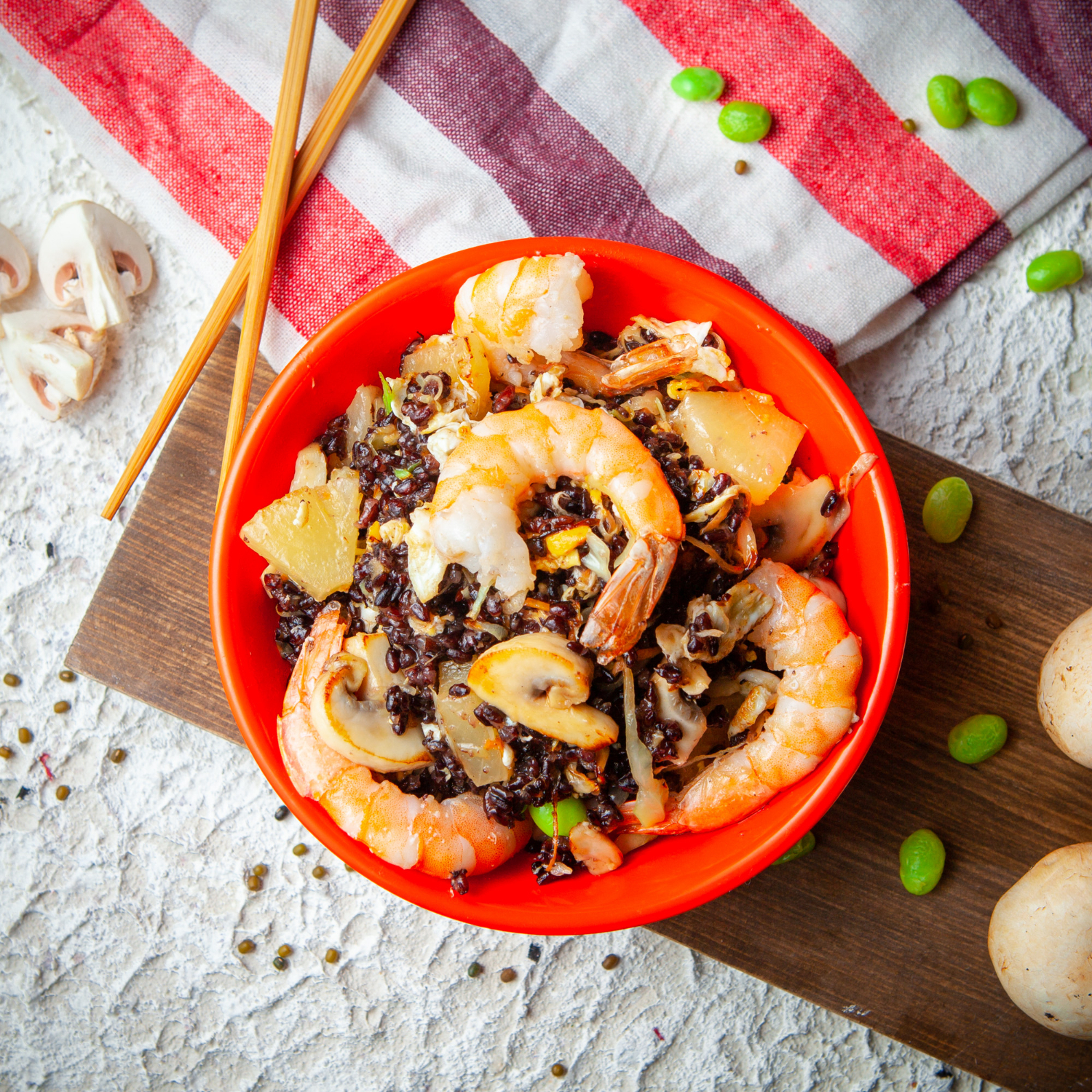Shrimp in chili sauces, known as ebi no chirissu, is one of the most well-known dishes in chuuka, or Chinese-Japanese cuisine. It is frequently shortened to “Ebichiri” and can be found all over Japan on the menus of Chinese restaurants, in convenience stores, and in households where it is made for family dinners and bento boxes.
Chinese cuisine has been popular in Japan since ancient times. Sakoku, or “closed country,” or an isolationist foreign policy, was implemented between 1603 and 1868, severely limiting Japan’s connection with the outside world. As a result, commercial ports like Nagasaki (and, to a lesser degree, Yokohama and Kobe) that were still open to Chinese trade saw a significant concentration of Chinese food. You’ll discover a fusion of Cantonese and Hokkien cuisine in meals like gua bao, sweet and sour pork, and siu mai (dishes that are prominent in Chinatowns in the West) near those places as a direct result of the impact of Chinese sailors and merchants from Guangdong and Fujian. Chuuka cuisine has developed significantly differently in Japan than Cantonese-based Chinese food has in the West as a result of these influences. To be clear, chuuka refers to Chinese food in Japan generally but is a phrase that is always changing. The word refers to both the increasingly popular Chinese-Japanese cuisine as well as Chinese food prepared more generally in China. The evolution of Chuuka is always changing to accommodate Japanese taste.
These days, popular chuuka foods include Ebichiri, dandan noodles, mapo tofu, and pork that has been cooked twice. Less chili heat than what might be found in their Sichuanese counterparts has been added to these meals to accommodate Japanese preferences. It’s interesting to note that Chen Kenmin, the famed Chinese-born Japanese chef, is largely responsible for this effect. Due to his influence, Ebichiri has been modified to accommodate regional preferences and a reduced tolerance for spicy heat. Using ketchup to tame the spiciness of the Sichuan chili-bean paste (doubanjiang) and adding prawns.
Ingredients
- 2 tablespoons plus 1 teaspoon unmodified potato starch, divided
- 12 to 15 extra large shrimps, peeled, deveined
- 1/4 teaspoon baking soda
- 1 large egg white
- 1/4 teaspoon salt
- 250ml vegetable oil, for frying
- One 1/3-inch knob fresh ginger, peeled and minced
- 2 medium garlic cloves, minced
- 1 tablespoon Sichuan-style chili bean paste, such as Chinese doubanjiang or Japanese tobanjan
- 3/4 cup (175ml) homemade or store-bought chicken stock or water
- 1/4 cup ketchup
- 2 teaspoons sugar, plus more if needed
- 2 teaspoons rice vinegar, plus more if needed
- 1 tablespoon (15ml) sake
- 1 negi (Welsh onion) or 1/2 small leek, white part only, rinsed well and minced
Directions
- 1 teaspoon potato starch and 1/4 cup (60 ml) cold water should be thoroughly blended and set aside in a small bowl.
- Rinse the shrimp for one minute under cold running water while giving them a gentle massage with your hands. Salt, egg white, baking soda, and washed shrimp should all be combined in a medium bowl. With a spoon or clean hands, coat the shrimp in the remaining 2 tablespoons of potato starch.
- Over a baking sheet with a rim, place a wire rack. Heat oil to 330°F (165°C) in a carbon steel wok or a 10-inch carbon steel or stainless steel pan over high heat. Add the shrimp, discarding any excess marinade, and drop them as close as you can to the surface of the oil to prevent splashing. Fry for about 2 minutes, stirring and turning the shrimp occasionally, until they are completely cooked. (Cooked shrimp will still appear rather pale because potato starch does not brown as much as wheat flour does.) Shrimp should be moved to the prepared baking sheet using a slotted spoon or a spider. Ladle oil slowly through a sieve with fine mesh over a medium heat-proof bowl.
- Return 30ml of oil to the now empty wok and heat it on high (allow remaining oil to fully cool before storing). Cook the ginger and garlic for approximately 10 seconds, turning often, until they are tender but not browned. Stirring constantly, add the chili bean paste and simmer for 30 seconds or more until fragrant. Add the ketchup, sugar, vinegar, sake, and negi. Add the chicken stock (or leek). After bringing to a boil, lower the heat to a simmer, and cook the negi (leek) for 2 minutes, stirring frequently, until it is soft and tender. Salt, vinegar, or sugar may need to be added to the seasoning as needed to taste.
- Pour in the reserved shrimp and toss to coat. Stir in the potato starch slurry, a teaspoon or two at a time, until the sauce thickens enough to coat the shrimp in a glaze; discard any remaining potato starch-water mixture or save for another use. If the sauce thickens too much and becomes gloppy, add 1 tablespoon of water at a time to loosen it up.
- Serve immediately on a plate.

